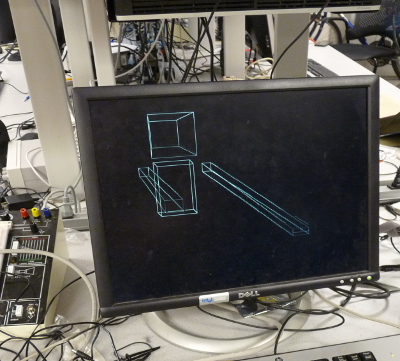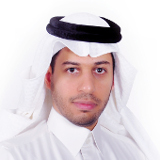- Design & Implementation of a Multi-car Tram System with Virtual Tracks (trackless)
- Smart Campus
- Design and Implementation of a Client-server Research Firewall
- Cloud-based Secure Custom Computing
- 3WSDS: 3-Way Secure Data Splitting
- Tracking Employees in a Working Environment Using WSNs or RFID
- Structural Health Monitoring System
- Real-Time Upper Body Motion Tracking System
Design & Implementation of a Multi-car Tram System with Virtual Tracks (trackless)
Need to design and implement a multi-car tram with no tracks! The pilot car is controlled (speed and direction) from a remote computer, while all trailing cars follow the exact path of the pilot car.
Prerequisites: COE 306.
Outcome: A complete prototype with at least three cars (pilot + 2 trailing cars) with a user interface SW on a PC that allows us to drive the pilot car.
Requirements:
- All cars must maintain the same speed with +/- 1 mm/s accuracy (i.e. the difference in speed between any two cars can’t exceed 1 mm/s).
- Trailing cars should follow the pilot car’s path with +/- 1 cm accuracy.
- Speed control down to 1 mm/s; min. speed 0 and maximum speed 1,000 mm/s.
- Steering control down to 1°; min. steering degree is 0° and maximum is 70°.
| Supervisor: | Dr. Muhammad Elrabaa | No. of students: | 2 – 3 |
| Status: | Taken |
Smart Campus
To design and develop a smart campus system where all services and operations are automated (e.g. auto-attendance taking, auto-login to campus computer facilities, auto-charging for services such as cafeteria, photocopying, … etc., social interaction, … etc.)
Prerequisites: ICS 202, COE 306, COE 344, and COE 444 or COE 405 or COE 424.
Outcome: A complete system with at least one provided service (e.g. auto-attendance).
Requirements:
- Auto-recognition of faculty, staff and students.
- Customizable service levels.
- Protected users’ privacy & data security.
- Non-invasive solution (i.e. does not require users to wear anything!).
| Supervisor: | Dr. Muhammad Elrabaa | No. of students: | 2 – 4 |
| Status: | Taken |
Design and Implementation of a Client-server Research Firewall
Design and implement a client-server research firewall application to study malware behavior and user responses to firewall warnings. The firewall should record malware and benign processes’ behavior. It should also record users’ responses to different firewall warnings and correlate them to what the user was doing when responded to the warning.
Prerequisites: Excellent programming skills, Operating Systems course.
Outcome: A running client-server firewall application in which client-firewalls collect data and behave according to rules specified by a server-firewall application.
Requirements:
Phase 1 (Client-side application)
- Detect any incoming and outgoing traffic.
- Associate traffic with its process (application).
- Group traffic based on it process and/or conversations.
Phase 2 (Client-side application)
- Can produce false warning based on given criteria.
- Record user’s responses to firewall warnings.
- Record applications’ traffic behavior.
- Ability to block traffic.
Phase 3 (Server side application)
- Time sync all client-firewalls.
- Updates warning messages and criteria.
- Receive statistics from all client-firewalls.
- Participants’ reward mechanism.
- Exit survey updates.
| Supervisor: | Dr. Muhammad Mahmoud | No. of students: | 2 – 3 |
| Status: | Available |
Cloud-based Secure Custom Computing
Design and implementation of a secure custom-computing platform where users can get custom high performance computing over the internet.
Prerequisites: COE 405 (COE 451 is a plus).
Outcome: A complete prototype of FPGA-based custom computing machine accessible through the internet with secured users’ data.
Requirements:
- Highest performance for the selected application.
- User’s data security with public-key encryption.
- Multiple simultaneous custom computing machines.
| Supervisor: | Dr. Muhammad Elrabaa | No. of students: | 2 – 3 |
| Status: | Available |
3WSDS: 3-Way Secure Data Splitting
A digital design is needed for a USB hub with 3 ports. when the hub is connected to a computer and the user wants to store a file, it should produce 3 distinct files and store each file in a different USB that is connected to it. When the user wants to read a stored file, it should get files from the connected USBs and then produce the originally saved File.
The design is based on secret sharing scheme (SSS). In M out of N SSS, K-bit integer can be split into N parts. Each part by itself will have no information about the original data. Even M – 1 parts should have no information about the original data. At least M parts are needed to recover the data. This project will implement the simplest version (2 out of 3) SSS.
Prerequisites: Knowledge of hardware modeling language is preferred.
Outcome: A working prototype of the USB splitter device.
Requirements:
- A design for the partitioning circuit.
- A design for the reconstruction circuit.
- A model for both in a hardware modeling tool.
| Supervisor: | Dr. Talal Alkharobi | No. of students: | 2 – 3 |
| Status: | Taken |
Tracking Employees in a Working Environment Using WSNs or RFID
The project is about tracking employees in a working area. The info should be location and time stamp. The students should compare more than one localization protocol.
Prerequisites: COE 306.
Outcome: A working implementation of a system for tracking employees.
Requirements:
- Tracking of employees by recording locations and time stamps.
- System integration into a working area.
| Supervisor: | Dr. Tarek Sheltami | No. of students: | 3 – 4 |
| Status: | Taken |
Structural Health Monitoring System
In this project, you design and implement a graphical user interface (GUI) that monitors the structural health of a building where multi wireless sensors are deployed. The GUI application is to run on a PC connected to the sensor sink node which communicates with the PC via serial interface (UART). The application is required to receive serial message from the sensor node sink asynchronously and also be able to send serial message to the sink.
Prerequisites: Energetic, motivated and very good in programming.
Outcome: It is expected at the end of the project to have an operational product with full features.
Requirements:
- Locating the sensors on the building GIS map.
- Prepare the sensors for reading the data properly.
- Receiving periodic data from the sensors.
- Integrating the sensors for specific data at a specific period of time.
- Store received information in a Database.
- Processing received data and provide:
- statistical analysis.
- judge the health of the building based on a predefined threshold.
- report immediately any abnormal condition(s).
- Implementing search functions from the GUI itself.
- Present graphically the current status of the building.
- Having a secure access to database and a list of a controlled access to the reconfiguration option.
- Secure communication (optional).
| Supervisor: | Dr. Uthman Baroudi | No. of students: | 2 |
| Status: | Available |
Real-Time Upper Body Motion Tracking System
In this project, it is required to design and implement a real time human upper body tracking system based on skin detection using Xilinx FPGA board, a VGA monitor and a camera. There are many motion tracking devices in the market today that allow humans to interact with objects in the virtual world such as the Kinect sensor and Wii remote. These systems use a variety of infrared, distance, acceleration and orientation sensors to many body motions. The goal of this project is to create a reliable 2D motion detection system that only uses a camera to detect and track humans. The motivation behind this project is to avoid using too many sensors for motion detection or any additional identifiers for body parts other than the user’s own skin.
Prerequisites: COE 405.
Outcome: A complete working prototype of the developed system.
Requirements:
Video streams are to be obtained from a camera, filtered, averaged and stored in a down sampled memory block. The down sampled frames are to be used to compute the location of the head and arms of the user. Movements of the head, chest and arms are to be displayed on VGA screen as a 3D robot constructed from several 3D boxes. The 3D projections are changed based on the user’s view of the camera to create a more realistic 3D robot. The user can change the current VGA view through a set of switches. The resulting system should be able to mimic the user’s real time body movements. The figure below shows an example of the 3D projection of the head, left and right arms.

| Supervisor: | Dr. Aiman El-Maleh | No. of students: | 2 |
| Status: | Available |
